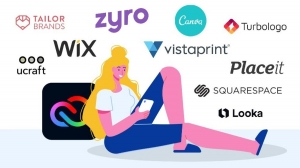Have you ever wondered how the gig economy is reshaping the lives of people who work with their hands? I’m talking about welders, electricians, drivers, plumbers—the folks who keep the world moving. Freelancing is no longer just for designers and writers. It’s taking over blue-collar work, and it’s making a huge difference.
What’s Happening to Blue-Collar Work?
A few years ago, the idea of a plumber or carpenter freelancing might have sounded odd. Most people in these trades worked for a company or ran their own small business. But things are shifting. Platforms like TaskRabbit, Thumbtack, and Tealpot have made it easier for skilled workers to connect directly with customers, cutting out the middleman. The result? More flexibility and more control over their time and income.
Why Freelancing Appeals to Blue-Collar Workers
Let’s be real: not everyone loves the nine-to-five grind. Freelancing offers blue-collar workers a chance to:
- Set their schedules: Want to take Wednesdays off for your kid’s soccer games? No problem.
- Choose projects: Pick the jobs you like and skip the ones you don’t.
- Earn more: With no company taking a cut, the earnings can go straight to your pocket.
And it’s not just about money. It’s about freedom. A lot of people in trades are tired of being told what to do, how to do it, and when. Freelancing gives them the chance to be their own boss.
The Rise of Digital Platforms
Let’s talk about how these changes are even possible. The internet has made it easy for workers and clients to find each other. Platforms built for blue-collar freelancing have grown like wildfire. Here are a few examples:
- TaskRabbit: Great for odd jobs like assembling furniture or running errands.
- Thumbtack: Perfect for professionals offering services like painting or plumbing.
- Tealpot: Designed specifically for blue-collar freelancing, connecting skilled workers with clients who need them.
These platforms handle payments, reviews, and even disputes, so workers can focus on the job instead of paperwork.
How Freelancing Changes Lives
One story that really stuck with me is about a mechanic I met online. He used to work for a big repair shop but got fed up with the long hours and low pay. He took his skills to a freelancing platform, and now he’s earning more money while working fewer hours. Plus, he loves being able to choose jobs that are close to home, so he’s not stuck in traffic all day.
And he’s not alone. Here are some numbers that show how freelancing is changing blue-collar work:
- 40% of workers in trades like plumbing and carpentry are now doing some form of freelancing.
- 63% of freelancers say they earn as much or more than they did in traditional jobs.
- 75% of clients prefer hiring freelancers for small jobs because it’s faster and cheaper.
These stats paint a clear picture: freelancing isn’t just a side hustle. It’s becoming the main gig.
Challenges of Freelancing in Blue-Collar Jobs
Of course, it’s not all sunshine and roses. Freelancing has its challenges, too. One big issue is the lack of benefits. Most freelancers don’t get health insurance or paid time off. That can be a dealbreaker for some people.
Another challenge is finding enough work. While digital platforms make it easier to connect with clients, there’s still competition. It takes time to build up a good reputation and get steady jobs.
But let’s flip that around. These challenges are also opportunities. Many freelancers are solving the benefits problem by joining co-ops or unions. And finding work gets easier with time—especially if you’re good at what you do.
Is Freelancing the Future of Blue-Collar Work?
I think it is. Look around, and you’ll see the world moving toward more flexible ways of working. People value their time and independence more than ever. And as technology keeps improving, freelancing will only get easier.
But what about you? Are you in a blue-collar job? Have you thought about freelancing? Maybe you’re already doing it. If so, I’d love to hear your story.
FAQs
- What are the best platforms for blue-collar freelancers?
Platforms like TaskRabbit, Thumbtack, and Tealpot are great places to start. They connect you with clients and handle things like payments and reviews. - Can I make a full-time living as a blue-collar freelancer?
Absolutely. Many workers earn more freelancing than they did in traditional jobs. But it does take time to build up a steady stream of clients. - What skills are in demand for blue-collar freelancers?
Anything from plumbing to painting, electrical work, and even driving. If you have a skill, chances are someone out there needs it. - How do I get started?
Sign up on a freelancing platform, create a profile, and start applying for jobs. Don’t forget to ask happy clients for reviews—those are gold.
Final Thoughts
Freelancing is changing blue-collar jobs in ways we never thought possible. It’s giving workers more control, flexibility, and opportunities than ever before. And while it’s not without its challenges, the benefits are hard to ignore.
If you’re in a blue-collar job and wondering what freelancing could do for you, why not give it a try? Who knows? It might just change your life.






